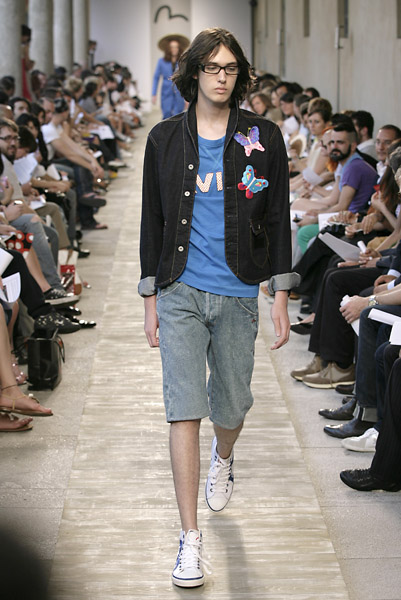This is guest post by Harry Mercer
Latent defects are ones that are not apparent in finished denim fabrics, but will appear after garment laundering. They are usually a result of procedures in denim sizing, dyeing and finishing that interfere with garment processing or cause spots, holes or streaks in garments. The most well-known is garment seam twist which results from incorrect skew adjustment.
Holes :

Spots :
These are usually caused by chemicals used in finishing or sizing that are not easily removed by laundry de-sizing or are not soluble and precipitate in garment de-sizing and re-deposit on the garments. Mineral oils, some cationic compounds, polyvinyl alcohol and other compounds often cause these problems. Chemicals that cause spots can be analyzed for their chemical composition and chemical treatments can be devised to correct these problems in the laundry. Also, the fabric supplier can be requested to cease using offensive products.
Alternating Light and Dark Streaks :
When an Indigo dyeing machine stops for more than a few minutes, the yarn that is immersed in the dye boxes will over-reduce and appear as light streaks after garment laundering. The yarns that are in the airing sections after the dye boxes will appear as dark streaks after laundering. The fabric producer can segregate this problem by identifying the yarn that was in the machine during the stop from just after the pre-wet section though the end of the drying section. The standard procedure of submitting a small washed sample of a fabric roll will not allow prediction of the presence of this type of streaking because the sample is taken from one end of a fabric roll and does not represent the appearance of the entire roll. These streaks appear and disappear in the fabric. For that reason, yarn that is involved in an Indigo machine stop should be segregated. The yarn from a machine stop produces such low quality fabric that it is almost not worth weaving. The causes of machine stops need to be rigorously investigated and action taken to eliminate them.
Crack Marks:
These are light streaks that usually appear in garments that do not follow warp yarns. These have often been caused by the use of acrylic hand-builders that result in very inflexible fabric. When the garment is entered into the washing machine, the acrylic film breaks forming a crack and the garment fades more along the area of the crack.
Sudden Shade Difference After Laundering :
After garment laundering a single leg panel, for example, will have 2 completely different shades, 1 light and the other dark, with a distinct, sharp break in color. This results when Indigo-dyed fabric is located on drying cylinders when the finishing machine stops for more than about 5 minutes. Applying high temperature to Indigo for long periods causes the Indigo in the deepest part of the yarn to sublime or evaporate and after surface Indigo is removed in laundering, the fabric part that was on the drying cylinders will be lighter. Therefore, this can not be seen in the original fabric.
Sizing Spots or Streaks:
Basic laundry de-sizing procedures are used to de-size carbohydrate-based sizes like starch or guar gums. Polyvinyl alcohol sizes can be more difficult to remove, especially from yarn that was over-dried in sizing. If not completely removed, polyvinyl alcohol can react with hypochlorite bleaches and result in permanent spots or streaks.



